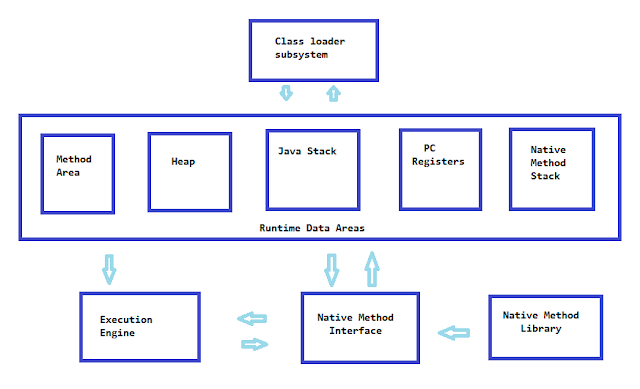WHAT IS JVM ?
The JVM doesn't understand Java file type, therefore we need to compile .java files to obtain .class files that contain the bytecodes and easily understandable by the JVM.
JVM is responsible to control the execution of every Java program and it enables features such as Automated exception handling and Garbage-collected heap.
Class Loader : Class loader is used to loads the Class for execution.
Method area : The Method area stores the pre-class structure as constant pool.
Heap : Heap is an area where the objects are allocated.
Stack : Local variables and partial results are store in the stack area and every thread create a private JVM stack, when the thread is created.
Program register : Program register is responsible to holds the address of JVM instructions which are currently being executed.
Native method stack : It contains all the native used in application.
Executive Engine : Execution engine controls the details of execute instructions that contained in the methods of the classes.
Native Method Interface : Native method interface is used to provide an interface between java code and native code during execution.
Native Method Libraries : Native Libraries consisted with the files required for the execution of native code.
JVM is responsible to control the execution of every Java program and it enables features such as Automated exception handling and Garbage-collected heap.
JVM ARCHITECTURE
Class Loader : Class loader is used to loads the Class for execution.
Method area : The Method area stores the pre-class structure as constant pool.
Heap : Heap is an area where the objects are allocated.
Stack : Local variables and partial results are store in the stack area and every thread create a private JVM stack, when the thread is created.
Program register : Program register is responsible to holds the address of JVM instructions which are currently being executed.
Native method stack : It contains all the native used in application.
Executive Engine : Execution engine controls the details of execute instructions that contained in the methods of the classes.
Native Method Interface : Native method interface is used to provide an interface between java code and native code during execution.
Native Method Libraries : Native Libraries consisted with the files required for the execution of native code.






0 Comments